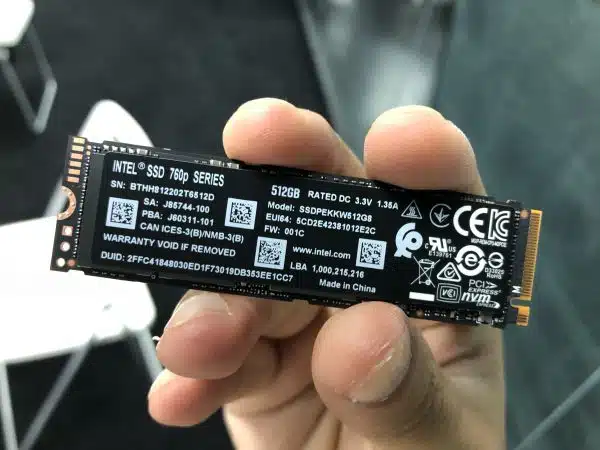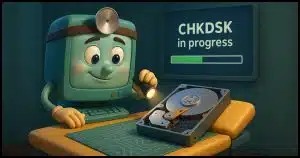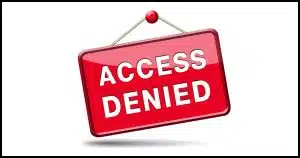There are several techniques.

This is a pretty common scenario. Depending on what caused the computer’s demise, there’s a relatively good chance you can retrieve the information off that hard drive.
Of course, if it’s the drive itself that caused the failure, things get a little more challenging.
There are several approaches to this problem. I’ll start with my favorite: not needing to do it at all.

Dead computer data recovery
If your computer dies, you can often get your files by removing the hard drive and placing it in a USB enclosure to connect to another computer. If that fails, you might try repair tools or data recovery services. Backups are the best way to avoid this mess in the first place.
Use a recent backup
By far the simplest solution to this problem is not needing to solve it at all.
A good backup strategy can almost eliminate the need to recover anything from a hard drive in a dead computer.
Using another computer, or after the dead computer has been repaired:
- Restore as much as you want — potentially the entire system — from your most recent image backup. This is why I like taking image backups every day. At most, you’ll be one day out of sync with your work.
- Restore the last-minute changes from the online service that you’ve been using for more-or-less continuous backups. I use DropBox for this. Do your work in a DropBox folder and remember to save periodically. Even if the machine dies completely, the work in progress will have been saved online.
Unfortunately, most people don’t have a comprehensive backup plan in place. There are also other reasons — like a last-minute change that was important but not yet saved online — that might still require retrieving data off the dead drive.
So we’ll give that a try.
Help keep it going by becoming a Patron.
Attempt repair
If you can boot the machine into safe mode, then the place to start is to run CHKDSK /R on the drive. That will scan the disk for surface errors that can cause the disk to become inaccessible.
If you can’t boot at all or if CHKDSK doesn’t help, and this is a traditional magnetic hard drive (i.e., not a solid-state drive), it might be worth buying SpinRite to see if it can repair the drive. (If not, you can get your money back.) SpinRite boots from its own media and can attempt to both diagnose and possibly repair errors on the disk surface.
If those options don’t work or don’t help, it’s time to try something else.
Get an external drive enclosure
Perhaps the most flexible way of dealing with a hard drive in a dead computer is to purchase a USB drive enclosure. These are almost identical to any external USB drive, except there’s no drive inside.
You need to get the correct size of enclosure for the physical size of your drive.

Current traditional magnetic hard drives are either 3.5 inches or 2.5 inches wide, and the enclosure must match.
SSDs come in two form factors as well: one that is physically the same as a 2.5-inch traditional hard drive, and the newer m.2 format.

Once you have the right size, it’s relatively simple to install the drive into the new drive enclosure. Not only do you have a way to access the drive, but it’s portable: you can access your data on whatever computer you have available.
After you’ve recovered the data you care about, that drive can have a useful second life as an external drive. Perhaps you can use it to create the backup strategy that might have saved you from this pickle to begin with. 🙂
If the drive fails to work in the external enclosure — perhaps it shows up as unformatted when you connect it to another computer or doesn’t show up at all — then it’s probably time to consult a technician or data recovery service.
Permission denied!
When moving a drive from system A (which had a problem) to system B (where you’re trying to recover the data), you may connect it to system B only to find that, although you can see that the drive is there and has files, you’re not allowed to see any of them.
Not to worry.
As long as you can log in to system B with an account that has administrative privileges, you’ll be able to take ownership and/or change the permissions associated with the files so you can read, copy, back up, or do whatever you like with them.
This applies to any drive moved from one system to another, whether it’s installed internally or externally, regardless of the reasons you’ve moved it. The permissions on the drive are relative to its original system and must be adjusted for the new system.
How Do I Gain Access to Files that Windows Says I Don’t Have Permission to Access? shows you how.
Do this
Prepare for the inevitable. Hard disks die. It’s a fact of life. Cynical folks would say that they tend to die at the worst possible time.
The best approach is to prepare for this certainty by backing up. Nothing can protect you better.
Prepare well, and when (not if) your hard disk dies, it’ll be an inconvenience, not a disaster.
Subscribe to Confident Computing! Less frustration and more confidence, solutions, answers, and tips in your inbox every week.




I think that I may have inserted the jumper pins in my Seagate Barracuda 500gb IDE in the wrong position.
Should the jumper pins be in cable select or master?
On the written guide label it shows pins in cable select AND master on slave off
The DVD is on its own ribbon cable going into it’s own IDE port on the motherboard IDE 2
The HDD shows on the motherboard as IDE 1
With me possibly inserting pins in the wrong order will I have fried the HDD.
If so what do you recommend as recovery software and which pin order should it be
The are only two ribbon cables DVD & HDD.
I look forward to your comments
Kind regards
Tony
That’s some old hardware. IDE’s not been used for hard drives for quite some time. My recollection is that the pin position often doesn’t matter, and won’t harm anything even if wrong. I recall that the hard drives I used int the past, if they use it, were set to master or not at all. “Recuva” is the recovery software I use, but the disk has to be recognized by your computer first. Good luck!
It seems to me that you have omitted one major reason that data from a drive may be unrecoverable as an external drive. Computers shipped with Windows 10 or 11 come (or came) with BitLocker drive encryption turned on. Unless the user has obtained and recorded the encryption key before the computer died, it may be impossible to recover data from the drive.
I tell everybody that unless they have government secrets, or the secret formula for Coca-Cola on their computer, turn OFF bitlocker, firevault, and any other encryption. So many times this has caused problems fixing computers owned by people who didn’t even know these things were turned on.
I have passwords to my accounts and other sensitive financial information stored on my computer. I use encryption and recommend tha others do. Bitlocker might be overkill in many cases, but it’s much simpler than having decide what needs to be encyption.
This shouldn’t be a problem for anyone who reads this article and heeds this advice. Perform regular system image backups with Macrium Reflect EaseUS Todo, or any other reputable backup program, and all you’ll have to do is restore your system and/or your files from the backup
Keep your working files in Dropbox, OneDrive, etc., and at worst, you’ll be one file out of sync with your work.